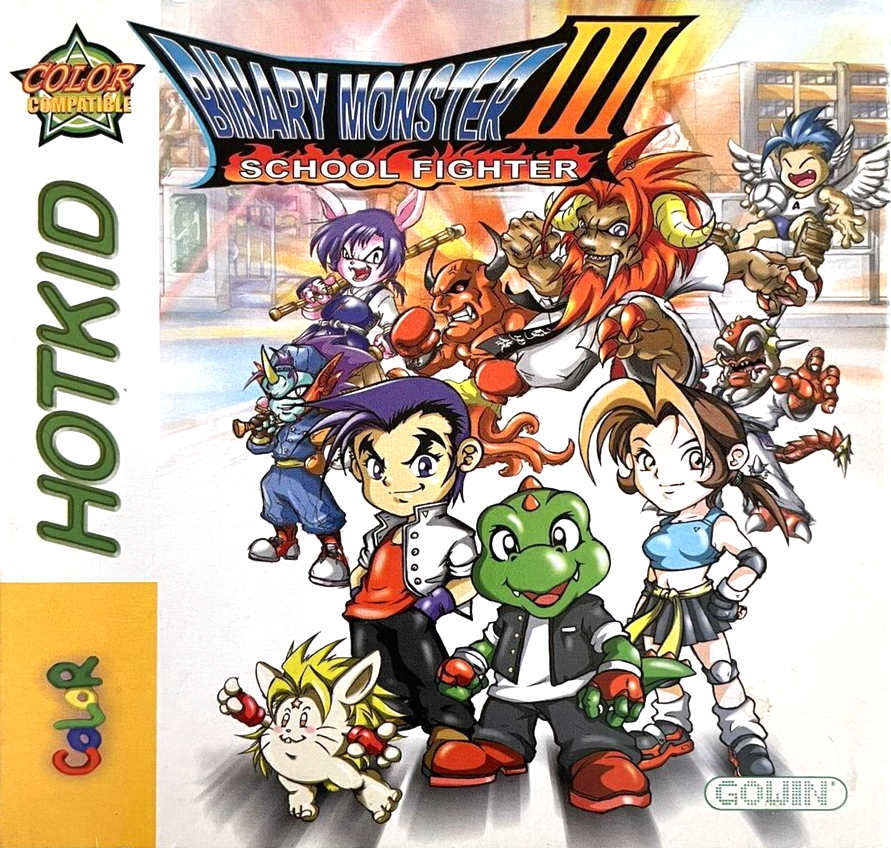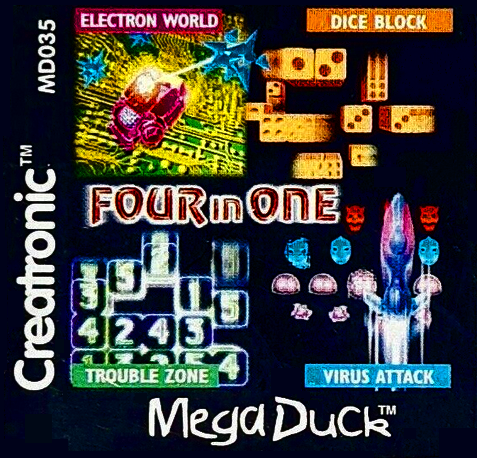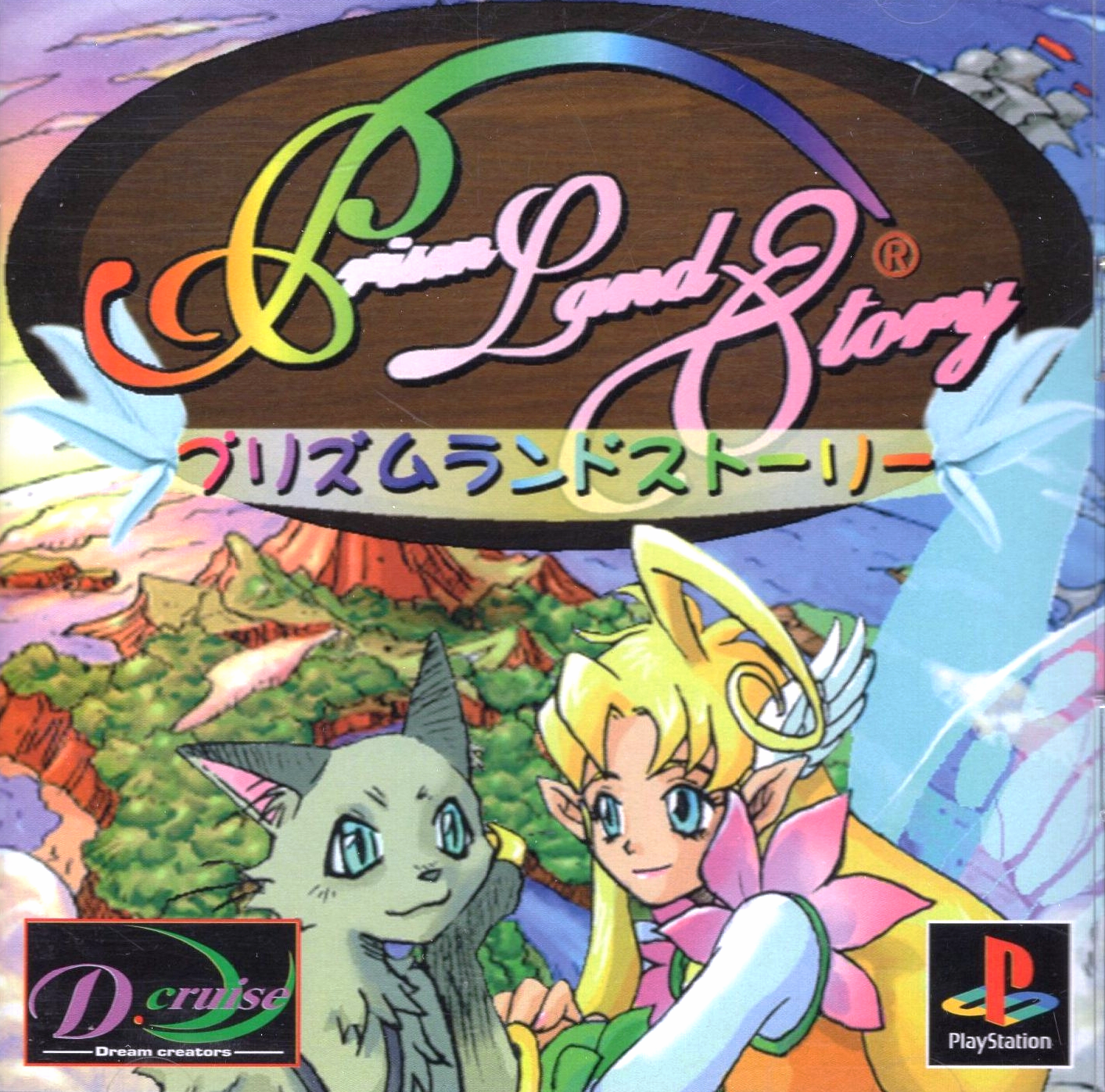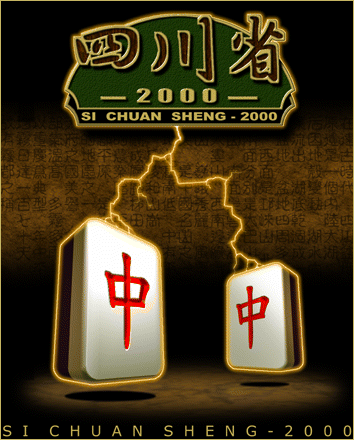

This is a fun, if short and simple, little beat-’em-up from the extremely competent folks at Gowin, one of the better Taiwanese unlicensed Game Boy developer houses. While the gameplay doesn’t offer a lot of variety – not like I can blame them much considering the Game Boy has only two buttons –, as usual for Gowin, the art oozes cuteness and personality. Following the copyright-infringing path of its conterraneous unlicensed brethren, its Chinese name translates to Digimon III, but the closest you’ll find to actual Digimon in the game are furry OCs. The Wild West that was the Chinese video game industry, where copyright was a mere suggestion, spawned a cottage industry of anti-piracy chips and special mappers for original games, mainly to prevent your neighbour from stuffing your precious little game into a bootleg multicart and selling an entire pallet of it to the first Mediterranean merchant that appeared at their doorstep. Ironically, this means that, while most licensed games can run on basically any emulator, unlicensed games require additional work on the emudev’s part in implementing the (many, many) DRM chips and weird mappers. Binary Monster 3 is, indeed, one of those games that went unloved by the scene: at least to my knowledge, not even taizou’s hhugboy, an emulator specialised in Game Boy bootlegs, natively supports it.
I first heard of this game from Ankos at the Bootleg Games Central Forum, who pointed out that someone had cracked Binary Monster 3’s anti-piracy checks and posted a patch to their blog, but the link had rotten and there was no backup. Taking a look at the blogpost, I saw that it documented the rather simple anti-piracy checks well enough that it felt like it was possible for me to crack the game once again using it as a rough guide… and so I did.
Update: My friend and fellow bootleg game enjoyer Smed has pointed out that one AP check remains in the password screen. Will I ever fix this final check? Maybe! Don’t hold your breath, though. If you feel like taking on the job, I’ll be damn glad that’s one thing less for me to maybe-eventually do.

The best Bomberman game for multiplayer on the PlayStation got, in general, a very good official translation – and by that, I mean that the little voice clips of Bomberman adorably yelling your choices back at you on the menus were left unchanged in Japanese and there were no attempts at censoring things like the names of the illnesses from the Skull item. That being said, there was a translation decision that always baffled me: for one reason or another, they chose to remove the voice acting from the intro FMV. It sure felt like a pity – as usual for Bomberman, the acting is cute and full of personality, and watching the bombermen jump around and kill each other with all SFX intact without letting out as much as a yelp feels very odd. I’d been playing the game with the Japanese intro injected into my American ROM for a while, but I still wanted to know what they were saying to each other.
Now, I can’t really speak Japanese, but I sure can speak Spanish, and, as fate would have it, someone who speaks both decided to upload a charmingly mid-2000s-like fandub of the intro movie to YouTube in 2022. Using Dobleando Ando’s material as a reference, I subbed the intro in English… only to find out that the bombermen’s bickering are exactly what you’d think they’d be saying to each other by the visual cues alone, and the subs basically add nothing to the experience but visual clutter. While the little voice clips in the game itself are just an accompaniment to the action and to visual cues that were translated to English, an FMV entirely in Japanese would probably confuse the average Western player, and subtitling one minute of “take that”s and “outta my way”s would look pretty awkward, and now Vatical Entertainment’s decision to just mute the voice lines feels understandable and perhaps even prudent. While my plans to upload the restoration+subs hack to RHDN went down the drain, I figure the bland fruit of my work still warrants uploading somewhere, and my obscure little Internet corner will do.
The downloadable archive includes two patches: the first one – the one I personally use – only restores the audio, and the second also includes subtitles.

Four in One is a nice little compilation of four simple games by Sachen that were never released by themselves: Virus Attack, a bad Galaga clone; Electron World, the mandatory Battle City clone; Trouble Zone, a much easier and visually uninteresting Columns clone; and Dice Square, aka Dice Block, which is… a completely original puzzle game. Huh. It is so original, in fact, that nobody online seemed to know how to play it when I first stumbled upon it years ago. I wrote at great length on my blog about my entire journey with it, from figuring out the rules to making this patch I didn’t even get to explain yet, but the gist of the game is that you have piles of blocks on a field and your goal is to push all blocks to the ground so that all piles are only one block tall – and you can only climb or push one block at a time. It’s a very fun game, the sort that you finish and wish it were longer, even though it is clear that very little thought has been put into some of the levels’ design and even less on the difficulty curve.
The problem with Dice Square isn’t on its design, but on its quality assurance, or lack thereof. The levels run on a fixed 5-minute timer. In what I can only speculate was a late change to plaster over some movement-related game-breaking bug, the player character moves unbearably slowly. You saw it coming – it is literally impossible to beat some of the later levels within the time limit. In the same low-effort spirit that I presume moved Sachen to reduce player speed to a crawl, I plastered over this problem by disabling the timer. Free max time bonus for everyone! But, most importantly, you can now beat the entire game.
As of May 2024, Four in One – and, thus, Dice Square – has two dumped releases: one on its original system, the universally beloved Creatronic Mega Duck, and one as a Game Boy port, made viable by the former being basically a hardware clone of the latter with the serial numbers filed off (i.e. different memory mappings). In fact, Sachen rereleased its entire surprisingly lengthy Mega Duck library on its non-avian cousin in four-in-one multicarts, this being one of only two who were originally multicarts on the Mega Duck itself. The Game Boy Four in One that includes Dice Square is the one with the product number 4B-002 (vol. 2).

Prism Land Story is a brilliant little Arkanoid-like paddle-and-ball videogame with a quite captivating fantasy setting and shōjo style art that looks straight out of a 1990s compilation manga. It features a rather interesting shop system in which you can spend MP before entering a level to start with powerups already in effect – not too dissimilar from how modern pay-to-win mobile games work, except without the microtransactions and with some semblance of actual balance. It was self-published by tiny developer house Dcruise. and then proceeded to be mangled by a flock of budget publisher vultures Prometheus-style in a succession of ever-worsening cheapy releases, one of which being farted out in Europe only by the penny-pinching extraordinnaires at MiDAS Interactive. Yes, that MiDAS. This could have been an alright release if you’d’ve been willing to overlook the omnipresence of Comic Sans, if it weren’t for a very crucial problem: for some exasperating reason only the corkheads at MiDAS are privy to, they made the decision to remove Memory Card support. Make no mistake, Prism Land Story is not a particularly easy nor short game; it was ostensibly meant to be played in more than one sitting, and, while nowadays we have the luxuries of virtually unlimited savestates on cycle-accurate emulators that can run the game flawlessly on the cheapest of laptops, if you wanted to play it on a PSP or on real hardware, you’d be shit out of luck. If that fuckup isn’t enough for MiDAS’ version to be a dealbreaker for you, the other big one likely will be: in the process of doing away with the Memory Card support, they also removed the rather refined PlayStation Mouse support the original had, which was arguably the best way to play the game.
Fortunately for us, not only MiDAS did an acceptable, if utilitarian, job in translating everything that mattered – story included –, but Dcruise. made all text assets of the game into pure, uncompressed, easily hackable TIM images. This patch, meant to be applied to the one good Japanese version, mostly injects MiDAS’ translated assets into the fully-featured game, bringing the joys of savegames and mouse control to the gaijin. As of v1.1, it also fixes a graphical bug that arises from this injection which I learned how to squash over the course of a few nights with much patient help from the good people of the RHDN Forums. I don’t think there are any other visual weirdnesses left that weren’t already there from MiDAS’ half-assed job, but I didn’t test the patch too thoroughly and if you find any weird bug you should definitely hit me up. Maybe one night I should redo all the assets with a more pleasing font and spacing that actually makes sense… v2.0 incoming? Don’t hold your breath…

Sichuan sheng is the Chinese reading of the Han characters 四川省, which are better known in the West by their Japanese reading: Shisen-shō. In case you’re not familiar with it, it’s the other mahjong solitaire game, the one where all tiles are placed in a single rectangle and they must be removed in pairs by connecting them with at most three orthogonal lines. Si Chuan Sheng 2000, which came out when 2000 was still in the future, is one of the very few Shisen games I can think of that actually shakes up the formula. Developed by the always excellent T-Time Tech & Art of Jurassic Banqi quote-unquote fame, it features as its centerpiece a series of 64 carefully constructed puzzles with mahjong tiles, torches, dynamite packs and concrete blocks, besides other game modes like regular shisen and two-player modes. Like all the 10 other people outside Taiwan who appreciate this game, I first heard of it through Rubycored’s longplay of it on YouTube and instantly knew I had to play it for myself.
Once I finally managed to get a copy, two problems arose: first, even though the game is 32-bit, the installer was made with InstallShield 5, which includes a 16-bit stub, making it impossible to install on a 64-bit machine without winevdm. Second, and most annoying to me, is the game’s DRM. As one may expect from a 1998 game, it artificially requires the CD-ROM to be present on the first CD drive before allowing you to play. This was annoying enough to me that I took the time to patch it out and then write a rambly blogpost about it. To make it easier for everyone, I’ve also repackaged the game to use a 32-bit setup stub made by AxXxB of Old-Games.RU.
And, apropos of nothing, I will repeat what I said on my blog: if you are a representative of T-Time and want to file a takedown request on this download, please by all means email me. I will be delighted to remove it from this website, because that would mean that you actually care about Si Chuan Sheng 2000 and are probably planning to rerelease it, which would make the problem moot. It literally would cost you close to nothing to put it up for sale on GoG and watch the money trickle in.

Alright, I have to preface this one with a controversial statement: this is a terrible game. Before you light up your torches and rummage through your sheds after pitchforks, allow me to explain myself: yes, the character designs are adorable; yes, the anime FMVs are really well made; yes, the controls feel really fun and intuitive despite their relative complexity. The huge, unignorable issue with this game that makes it entirely unacceptable in my view is the story, which is perhaps the most morally bankrupt writing I’ve ever seen in a story-driven video game that wasn’t made to be inflammatory. Even though it is transparently clear that it comes from a place of earnest, blissful ignorance, I cannot describe this game any more charitably than a piece of racist copaganda – and anyone who knows me knows that I do not use either of those words willy-nilly. I do not consider myself a leftist even though I am often forced to vote with them due to my staunch socially progressive views (trans rights are human rights); I am not American and I’ve lived my entire life in a city where the police is largely fine. While all American cops are probably bastards, I do not support defunding the police locally – in fact, I think my state police force should get a budget increase, but that’s getting too much besides the point: the takeaway here should be that I am not to be taken lightly when I call a piece of media copaganda.
I’m going to enter spoiler territory from here on out because I believe the plot really needs to be addressed. Whenever Tail Concerto is discussed online, on the rare occasions that it isn’t mentioned in the same breath as Klonoa for little reason other than both being furry-adjacent PSX IPs currently owned by Bandai Namco, it is touted as a touching story of love and acceptance. While I’m unsure of whether this marketing started with the fandom or with Atlus, Bandai or CyberConnect themselves, I do believe that was their intention – the game is rather ostensibly written as commentary on the American racial divide, maybe a little too ostensibly in the way they chose to name the franchise it kickstarted Little Tail Bronx. The game is also rather ostensibly made by Very Japanese people with little to no grasp of English, as evidenced by the litany of inconsistent Romanisations and outright orthographical errors in the assets of the game, which does explain just how simplistic and misguided the story is.
The story is set in a fantasy kingdom inhabited by two species of furries: the dogs, who are the wealthier majority holding most positions of power including the entire police force and the royalty, and the cats, a sizeable minority with a reputation for being criminal lowlifes. Dogs largely distrust cats, who in turn blame their predicament on the dogs. The game follows officer Waffle Ryebread, a pale cream dog, who finds out that the skittish girl who grew up next door to him, a dark brown cat called Alicia, became the leader of a criminal gang, and he is assigned by the corporation to arrest her. Up to this point, all is fine; the story could very well lead to Ryebread slowly understanding the systemic oppression against cats and having his world shattered beneath his feet, but that is very much not what happens. Instead, he manages to reach through Alicia’s emotional barriers, reminding her of the kindness he showed her when they were kids, when he found her crying desolate and offered her a crystal pendant as a gift to make her happier, which she very tsunderely accepted and carried with her for life. She learns that dogs don’t actually hate cats; instead, their distrust is entirely justified by most cats’ collective choice of giving up on honest work and turning into crime, being effectively brainwashed into doing so by what is alluded to be a cabal of evil fat cat kingpins. Learning that her deep-set grudge against dogs is unwarranted, she is set free from her mental shackles that led her to crime, and she happily cries clutching the pendant as the eyepatch she’s worn during her stint as a mobster slides off her face, anvilliciously symbolising her finally seeing the truth she understood naturally as an innocent child.
Yes, you read that right. Tail Concerto is about a light-skinned cop convincing a dark-skinned minority criminal to stop doing crimes by teaching her that the oppression is all in her head and the racial tensions are actually the minority’s fault. I don’t think I need to explain this further, really.
Now, if you’re a Little Tail Bronx fan (and, if you’re reading this, chances are you are), I want to make it clear that I don’t think this makes you racist. Most fans I’ve met are very progressive, in fact, just like most Harry Potter fans I’ve met aren’t virulent transphobes. I do think, though, that if you played through this game and thought that it was an adorable story of acceptance, you were failed by your literature teachers when you were in school. And by the way, if you want to know what I think about Solatorobo or anything else from the franchise, my answer is that I don’t know, because all I’ve seen from it was this game and I think that’s going to stay this way.
I made this patch because I really wanted to play Tail Concerto back when all I knew about it was what the fandom had to say, but like many I couldn’t stand the grating American dub’s voice acting. The version 1 came out years ago and it was very hacky and rather incomplete, basically only undubbing the FMVs and silencing the full in-game voicelines. This is the version I played the game on. As much as I disliked Tail Concerto, the shoddiness of my work bugged me, and eventually I decided to make a better version using the E3 preview build as a base, which not only has all the original Japanese in-game grunts and yelps, but also seems to have a translation closer to the original. The only thing left would be the in-game voice acting, which is muted, but I am absolutely done with this game. If you want to hack them back in and use my subs for the FMVs, you have my permission. Incidentally, the subs were translated from the French version and compared to a machine translation of the Japanese speech just to make sure there weren’t obvious large discrepancies.
I initially planned to release this patch with a blogpost where I would also probably whine about things like the level design, but I reckon if I write where people will necessarily pass by to get the patch, there’s a bigger chance that what actually matters will be read. A reduced version of this rant is also present at the end of the patch’s readme, so don’t waste your time reading that all the way through if you’ve already read it here.
Last update: 2025-08-09